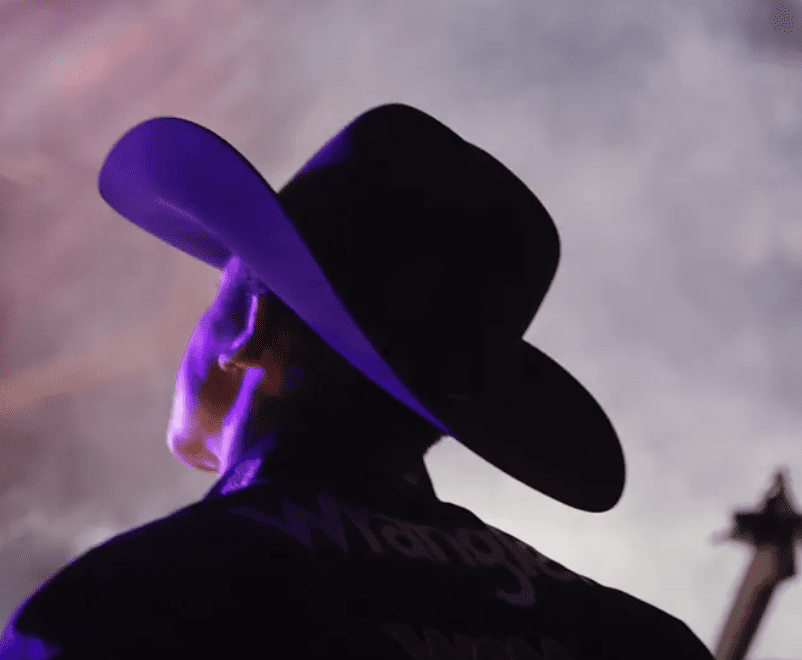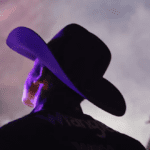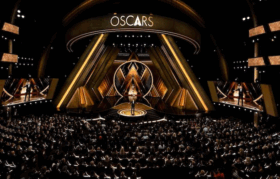
 Professional Bull Riders is being presented with a Luminary Award at the 2025 Cynopsis Sports Media Awards on June 4 in NYC. PBR is recognized as the League of the Year not only for its vision of innovation within sports media, but for the growth of an entity that started with a group of 20 bull riders breaking away from the traditional rodeo scene. “It’s been a lot of hard work creating our vision of Western sports in the world,” Sean Gleason, CEO/Commissioner of PBR, told Cynopsis Sports editor Noah Ziegler. “Not only doing that and traversing the waters that we had to traverse from the traditionalists in the rodeo space, but as we set forth on introducing Western sports to a new fan, it’s been an uphill battle. We’ve had to push the rock up the hill a lot along the way … We’re starting to see a lot of momentum behind the sport, and it’s a great feeling.”
Professional Bull Riders is being presented with a Luminary Award at the 2025 Cynopsis Sports Media Awards on June 4 in NYC. PBR is recognized as the League of the Year not only for its vision of innovation within sports media, but for the growth of an entity that started with a group of 20 bull riders breaking away from the traditional rodeo scene. “It’s been a lot of hard work creating our vision of Western sports in the world,” Sean Gleason, CEO/Commissioner of PBR, told Cynopsis Sports editor Noah Ziegler. “Not only doing that and traversing the waters that we had to traverse from the traditionalists in the rodeo space, but as we set forth on introducing Western sports to a new fan, it’s been an uphill battle. We’ve had to push the rock up the hill a lot along the way … We’re starting to see a lot of momentum behind the sport, and it’s a great feeling.”
Those 20 bull riders had invested $1,000 each at the time. Since then, PBR has been acquired by Endeavor and is now part of sports entertainment powerhouse TKO Group, boasting 800+ riders from around the world competing in more than 200 events each year. PBR’s media deal includes CBS Sports, which airs 25 hours of PBR content per year, as well as PBR’s FAST channel RidePass. In 1Q24, PBR on CBS posted an average of over 1 million viewers, serving as a 15% YOY increase at the time. As a whole, PBR broadcasts reach nearly 300 million households in 91+ territories.
Gleason, who joined PBR 26 years ago, has been on quite a wild ride with PBR. We spoke with him to discuss the league’s growth amid a competitive sports landscape. Below is an edited excerpt of the conversation.
As PBR itself has grown, how has the sports landscape changed during that time?
There were a few articles back in the day that were motivation for me, because when PBR had been on the scene … for seven, eight years at that point in time, and had established itself as a going concern and had made it through a lot of rough waters, we were constantly referred to as a niche sport. There were a couple of articles that suggested that of all these niche sports, none were going to survive, or very few would. PBR was always listed among the novelty or niche sports that weren’t going to make it, and that served as a lot of motivation for me, personally, to prove everybody wrong. I knew what we had, which was one of the most exciting, raw and real sports events that you can possibly watch. It’s filled with danger, excitement and adrenaline, so at its core, the sport’s very appealing to a broad audience, not just traditional rodeo enthusiasts. Our commitment to constantly putting the best bulls and both bull riders on the dirt in front of new fans, from Madison Square Garden to Crypto.com [Arena] in L.A. and all the places we’ve taken it over the years. It’s just It’s been a long, hard road to crack through … and here we are, 30 some odd years later, as arguably one of the top seven or eight sports in the U.S.
How important is the approach to marketing and presenting to fans or those not familiar with PBR in saying, ‘This is what we have to offer’?
I think marketing is everything, especially if you take it back to the fundamental principles of marketing, which is design your product to appeal to the audience. It started with that. We took bull riding out of these historically very rural rodeo environments. We promised our fans we put the best bulls and the best bull riders in the world, week in and week out on the dirt, and then we wrapped it in a rock concert and defined the product to meet the audience’s demands, as opposed to, ‘This is what has been going on for years and years. Please come watch us.’ It was really a redefinition of the product, and then positioning that in your marketing materials, your social posts, everything that we’ve done over the years, whether it’s building bulls and bull riders into the to the stars that they’ve become within the scope of what we’ve been able to establish. It’s all marketing. It’s all marketing-driven, and so every decision we make from this start of the conceptualization of what the product is and how it’ll appeal to the fans, to how you get them to choose to spend their money to come out and enjoy it or tune in on television. It’s all marketing, and we’ve been very aggressive over the years in marketing and shifting our marketing initiatives to meet the consumer trends and demands, but at its core, bull riding is a really exciting sport, and it’s also been perfect for social media, where you can wrap up the greatest rides and the greatest wrecks in 30 seconds for an audience that has a very low attention span these days, largely because of social media.
In 2022, PBR introduced the team series. How much has it helped PBR having those teams and regionally specific entities?
The team product was designed really to create and build fandom that transcends the individual athletes that survives for a team as the athletes come and go and succeed and fail and retire and whatever else happens. Part of the Team Series strategy really was to focus on a number of core markets where we could start building fandom that survived the rise and fall of their favorite rider or their favorite bull. Another marketing-driven initiative behind teams was that the vast majority of sports fans are fans of team sports. They understand it, they get it and they understand that this is the score, and in order for the other team to win, their score needs to be higher than the other team, and so it’s a very familiar paradigm. We didn’t change bull riding at all. It’s still eight seconds man against beast, but we changed the competition, and the competition in [a] teams format is a much more palatable and familiar competition platform to a general sports fan than individual bull riding is, which can be complicated and historical, and in some cases, hard to understand. The combination of those things really allows us to build fandom for the sport, for the brand among a consumer group that that may have never come to us if it were not for the team aspect and the fact that they can now root for a team where their colors and be a fan of that team for the next 20 years as bull riders come and go.
What is the approach to gaining more of an audience when there’s so much competition from other sports leagues, social media and different forms of content?
I think we stand out because of at the core, it’s the product. It’s a visceral, engaging, highly difficult, dangerous sport that puts you on the edge of your seat, and you’re not going to get that with pickleball. There’s a lot of fans of a lot of different sports, but we’ve done some research, and one of the things I looked at years ago was how many fans are truly a fan of one sport versus multiple sports? And what is the crossover between those sports? What we found through that research was that baseball had the most fans that were fans of only baseball and nothing else. They were not sports fans, they were baseball fans. PBR was the second sport at that time, and this is probably 12 plus years ago that we did this research. Then you look at the number of people that are fans of multiple sports, and it’s not a zero-sum game, really, when it comes to finding your niche in the sports world. It’s finding your consumer that is engaged and entertained by your product. So as you can imagine, there’s a lot of crossover between PBR and NASCAR. There’s a lot of crossover between PBR and outdoor sports. There’s a lot of crossover between PBR and UFC. So it’s a certain type of fan that’s looking for that visceral, thrilling moment of danger and excitement, and again, as you hook them into the sports competition, or the competition that’s following your favorite rider through a season or you follow your team through a season. When you start to care at that level, that’s when you have succeeded. That you’ve had to put all these pieces together with your product and your marketing and gain trial and educate them and do all of these things to get them to be fans of the sport.







